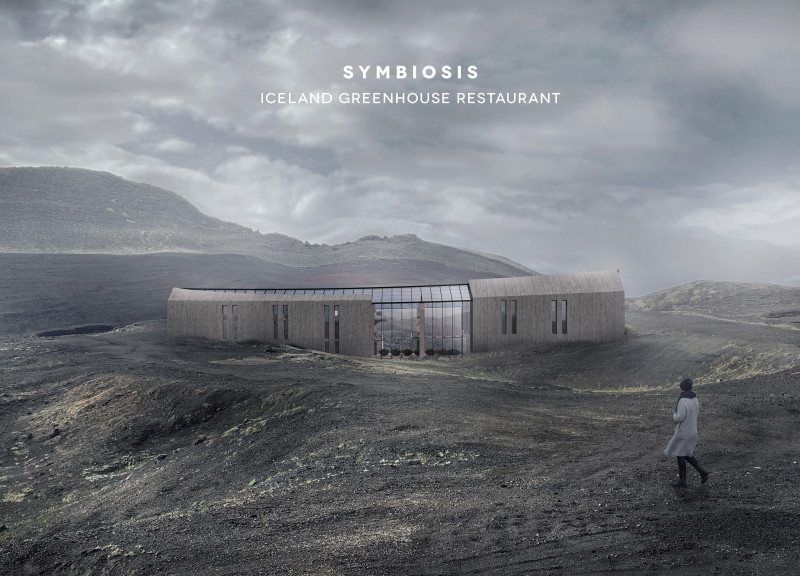5 key facts about this project
Symbiosis is a design located in Iceland that emphasizes the links between food production and dining experiences. The project combines a greenhouse and a restaurant, allowing visitors to connect with how their food is grown while enjoying meals in a simple yet thoughtful environment. The setting plays a crucial role in this design, responding to Iceland's unique natural landscape and climate. The approach highlights sustainability and invites guests to learn about their food sources.
Site Design
The project makes use of the area’s natural topography, which has higher ground at both ends and a lowered center. This slope is key to creating a visual and spatial relationship that takes advantage of light. The central greenhouse has full glass exposure, enabling plants to receive enough sunlight necessary for their growth. Nearby, an underground service area helps keep the workflow efficient while separating public spaces from operational ones.
Materiality
Selecting the right materials is essential for both functionality and environmental adaptation. Thick concrete is used for its ability to withstand harsh weather conditions in Iceland, providing durability and thermal stability. Glass is incorporated to promote necessary sunlight that supports the greenhouse environment. These choices help the structure blend into its surroundings while achieving practical needs.
Spatial Organization
The layout is carefully arranged to enhance user experience. Important spaces include a lounge, waiting area, dining area, kitchen, bar, and restrooms. This arrangement promotes smooth movement for both staff and diners. Learning opportunities are offered in the greenhouse and gallery, while the storage and mechanical spaces are placed to maintain efficiency. Positioned on the west side, the dining area offers views of the scenic landscape, enriching the overall atmosphere.
The West View
One distinct feature is the open view of a nearby volcano from the dining area, adding an impressive backdrop for guests. This perspective connects diners to the landscape and highlights the relationship between people and their food sources. Observing the surrounding environment enhances the experience, reinforcing the intention behind the design.






















































